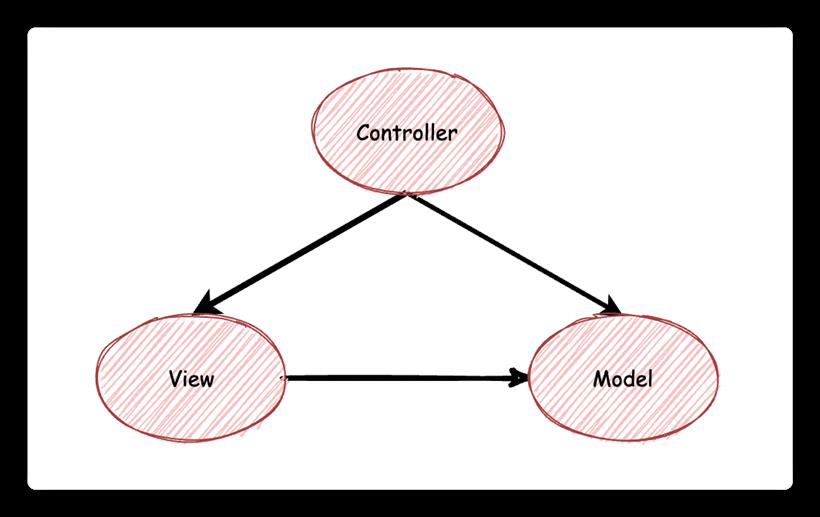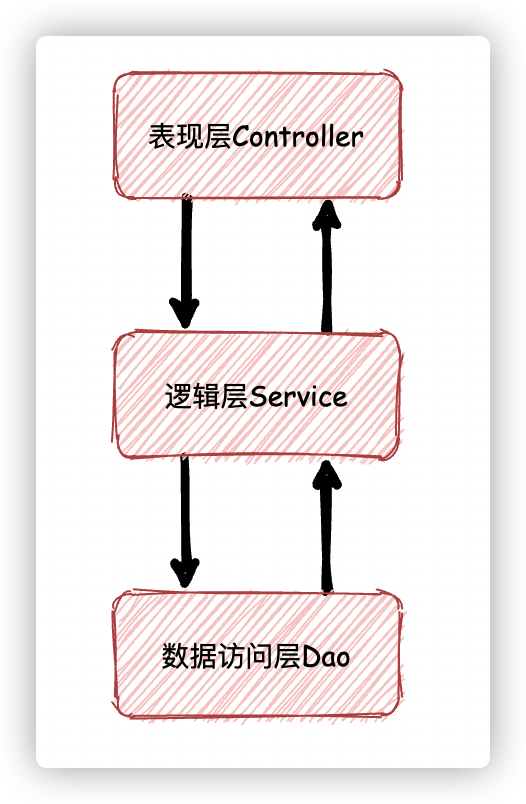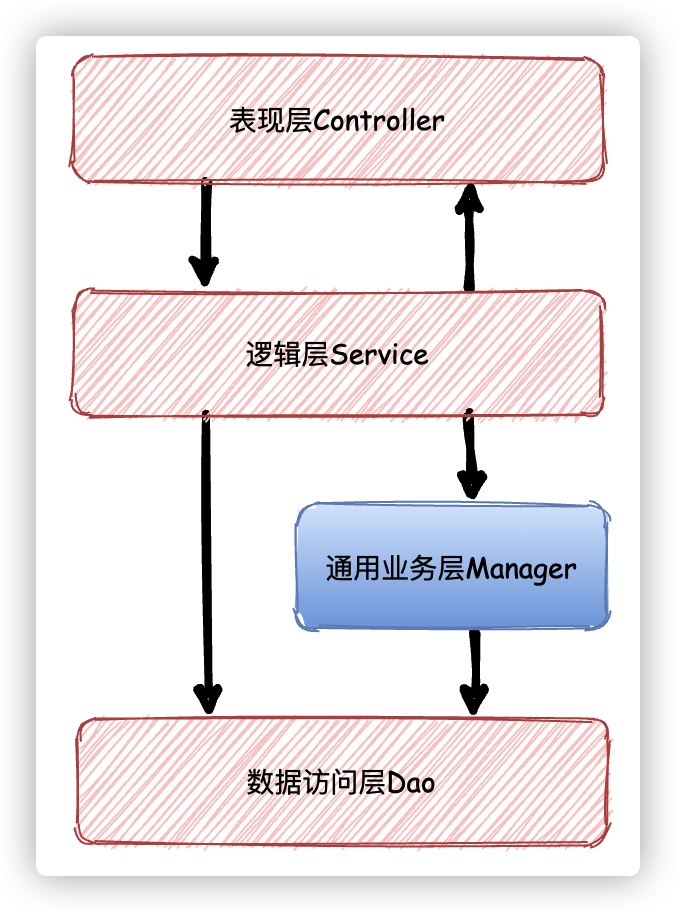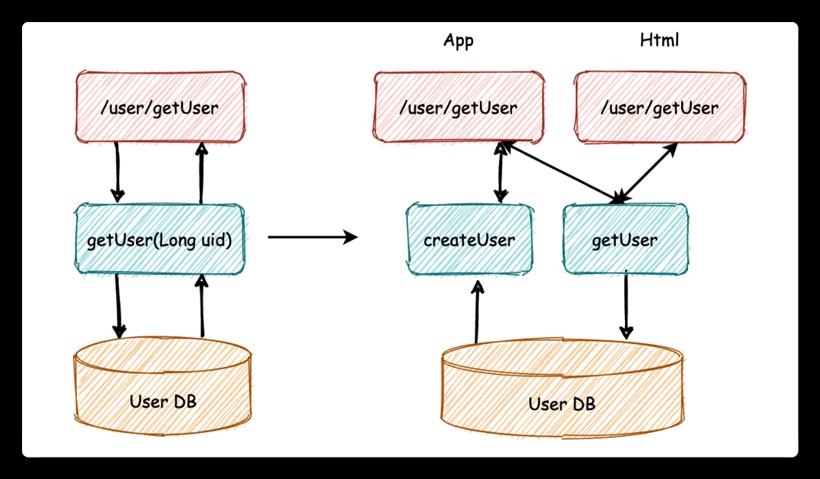- 联系我们
- duidaima.com 版权声明
- 闽ICP备2020021581号
-
 闽公网安备 35020302035485号
闽公网安备 35020302035485号
 闽公网安备 35020302035485号
闽公网安备 35020302035485号



在《alibaba java开发手册》中是这样描述Manager层的:Manager 层:通用业务处理层。
它有如下特征:
1.对第三方平台封装的层,预处理返回结果及转化异常信息,适配上层接口;3.与 DAO 层交互,对多个 DAO 的组合复用。

@Transactional(rollbackFor = Throwable.class)
public Result<String> upOrDown(Long departmentId, Long swapId) {
// 堆代码 www.duidaima.com
// 验证 1
DepartmentEntity departmentEntity = departmentDao.selectById(departmentId);
if (departmentEntity == null) {
return Result.error("部门xxx不存在");
}
// 验证 2
DepartmentEntity swapEntity = departmentDao.selectById(swapId);
if (swapEntity == null) {
return Result.error("部门xxx不存在");
}
// 验证 3
Long count = employeeDao.countByDepartmentId(departmentId);
if (count != null && count > 0) {
return Result.error("员工不存在");
}
// 操作数据库 4
Long departmentSort = departmentEntity.getSort();
departmentEntity.setSort(swapEntity.getSort());
departmentDao.updateById(departmentEntity);
swapEntity.setSort(departmentSort);
departmentDao.updateById(swapEntity);
return Result.OK("success");
}
上面代码在我们在我们采用三层架构时经常会遇到,那么它有什么问题呢?DepartmentService.java
public Result<String> upOrDown(Long departmentId, Long swapId) {
// 堆代码 www.duidaima.com
// 验证 1
DepartmentEntity departmentEntity = departmentDao.selectById(departmentId);
if (departmentEntity == null) {
return Result.error("部门xxx不存在");
}
// 验证 2
DepartmentEntity swapEntity = departmentDao.selectById(swapId);
if (swapEntity == null) {
return Result.error("部门xxx不存在");
}
// 验证 3
Long count = employeeDao.countByDepartmentId(departmentId);
if (count != null && count > 0) {
return Result.error("员工不存在");
}
// 操作数据库 4
departmentManager.upOrDown(departmentSort,swapEntity);
return Result.OK("success");
}
DepartmentManager.java
@Transactional(rollbackFor = Throwable.class)
public void upOrDown(DepartmentEntity departmentEntity ,DepartmentEntity swapEntity){
Long departmentSort = departmentEntity.getSort();
departmentEntity.setSort(swapEntity.getSort());
departmentDao.updateById(departmentEntity);
swapEntity.setSort(departmentSort);
departmentDao.updateById(swapEntity);
}
将数据在 service 层准备好,然后传递给 manager 层,由 manager 层添加@Transactional事务注解进行数据库操作。